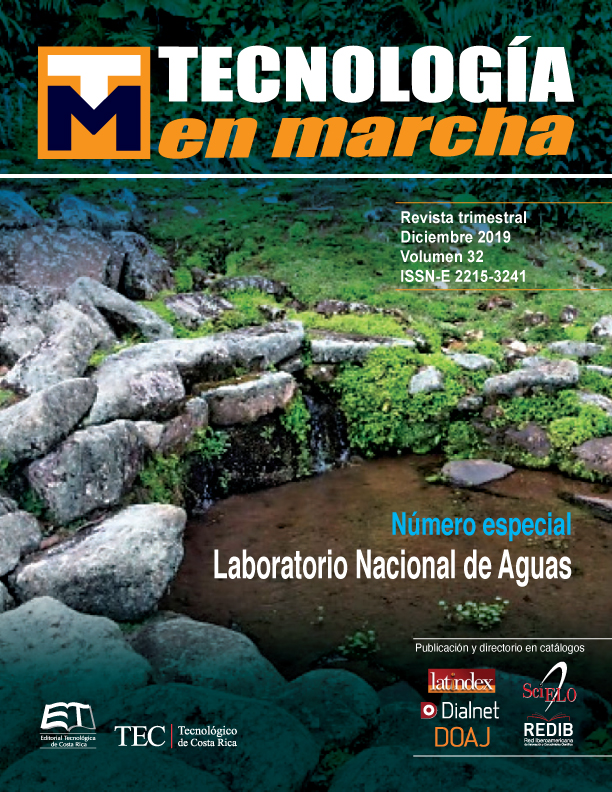Agua para consumo humano y saneamiento en Centros Educativos de Costa Rica al año 2017
Contenido principal del artículo
Resumen
Este estudio retrospectivo tiene como objetivo principal “estimar la cobertura del agua para consumo humano y saneamiento en aguas residuales, en los centros educativos de Costa Rica al año 2017, con el propósito de establecer la línea base y las metas para la Agenda 2030, en el marco de los Objetivos de Desarrollo Sostenible”. Para su cumplimiento, la metodología consistió en el análisis de datos de acceso a agua por mecanismo de abastecimiento, mediante el aporte del Ministerio de Educación Pública con su documento “Infraestructura en las Escuelas y Colegios Públicos del 2017”. Los datos de la calidad microbiológica del agua y las determinaciones de cloro residual, se obtuvieron del Programa de Vigilancia y Control de Calidad del Agua del Laboratorio Nacional de Aguas, en el marco del “Programa Bandera Azul Ecológica”. Los resultados obtenidos en los años 2016 y 2017 se compararon con los datos iniciales del 2004. Posteriormente, con información de calidad del agua del 2017 y sobre infraestructura del Ministerio de Educación Pública, se aplicó la “Escalera de Agua Potable” de la UNICEF y la OMS para los centros educativos de Costa Rica. Con respecto al saneamiento o disposición de excretas de los centros educativos, también se utilizó información del Ministerio de Educación Pública, de donde se identificó el porcentaje de escuelas y colegios que usaron alcantarillado, tanques sépticos, letrinas o pozos negros y otros; además, se cuantificó el uso de inodoros y lavatorios en buenas condiciones. Los resultados indican que el acceso a agua en los centros educativos públicos lo suministran los acueductos rurales en un 52,9%, los municipios 5,6%, las cooperativas y/o empresas 2,2%, el AyA 21,5%; por su parte, otras fuentes utilizadas fueron pozos en 6,7%, ríos 9,0%, otras fuentes 0,3% y no respondieron la encuesta 0,8%. La calidad microbiológica del agua indica que, en el 2016, la cobertura fue de 94,2% de calidad potable y en el 2017 fue de 95,9%. La comparación o evolución de la calidad del agua -desde el punto de vista microbiológico- entre el 2004, el 2016 y 2017, demuestra un gran avance de 18,5 puntos porcentuales. La estimación de la aplicación de la “Escalera del Agua Potable”, sugiere que el 86,0% de los centros educativos se ubican en el eslabón de “Servicio avanzado”, 4,1% en “Servicio Básico”, en “Servicio Limitado” 6,7% y “Sin servicio” 11,1%.
Detalles del artículo
Los autores conservan los derechos de autor y ceden a la revista el derecho de la primera publicación y pueda editarlo, reproducirlo, distribuirlo, exhibirlo y comunicarlo en el país y en el extranjero mediante medios impresos y electrónicos. Asimismo, asumen el compromiso sobre cualquier litigio o reclamación relacionada con derechos de propiedad intelectual, exonerando de responsabilidad a la Editorial Tecnológica de Costa Rica. Además, se establece que los autores pueden realizar otros acuerdos contractuales independientes y adicionales para la distribución no exclusiva de la versión del artículo publicado en esta revista (p. ej., incluirlo en un repositorio institucional o publicarlo en un libro) siempre que indiquen claramente que el trabajo se publicó por primera vez en esta revista.

